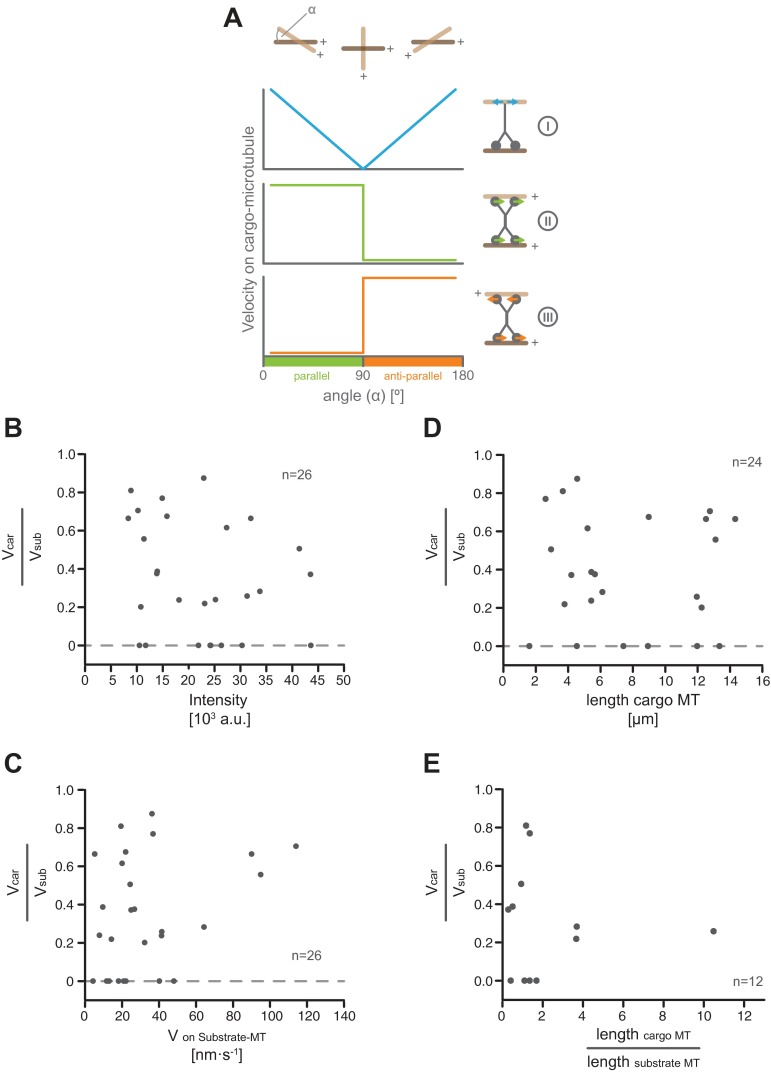Fig. S6.
Neither the size of the collective, its velocity on the substrate microtubule, nor the length of cross-linked microtubules affect the velocity differential between hKif15 motor domains. (A) Theoretical considerations as to how the geometry of intersecting microtubules might affect the coordination of movement across a (tetrameric) motor moving on both microtubules. (I) A (dimeric or) tetrameric motor associates by a diffusible secondary microtubule-binding site to the cargo microtubule (indicated by the blue arrows in the motor scheme on the Right). Translocation on the substrate microtubule will passively drag the secondary binding site along the cargo microtubule; we would expect high velocities on the cargo microtubule at acute and obtuse angles and low velocities around 90° (blue line in the schematic graphs on the Left). (II) A motor optimized for a parallel microtubule geometry (indicated by the green arrows in the motor scheme on the right), we would expect to show optimal movement (on the cargo microtubule) on parallel microtubules and impaired movement on (at least) the cargo microtubule on antiparallel microtubules (green line in the schematic graphs on the Left). (III) This behavior would be inversed for motors optimized for antiparallel microtubules (indicated by the red arrows in the motor scheme on the Right and the red line in the schematic graphs on the Left). (B) Plot showing the velocity differential across hKif15 motor domain pairs (Vcar/Vsub) in dependency on the hKfi15-eGFP particle intensity. (C) Plot showing the velocity differential (Vcar/Vsub) across hKif15 motor domain pairs in dependency on the particle velocity on the substrate microtubule (Vsub). (D) Plot showing the velocity differential (Vcar/Vsub) across hKif15 motor domain pairs in dependency on the length of the cargo microtubule. (E) Plot showing the velocity differential (Vcar/Vsub) across hKif15 motor domain pairs in dependency on the length ratio of the cargo microtubule divided by the length of the substrate microtubule.

